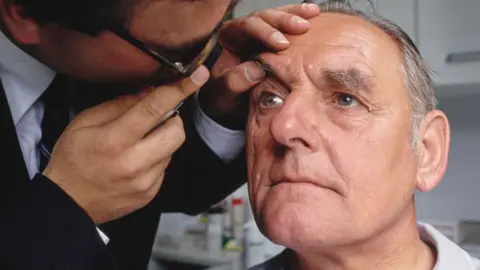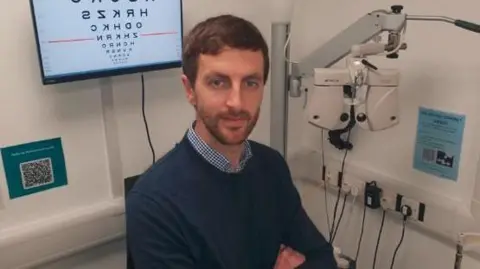Uni study focuses on new way to diagnose glaucoma
 Getty Images
Getty ImagesA £1.18m study aimed at helping to improve diagnosis of an eye condition that can lead to sight loss is to be carried out at the University of Bradford.
Glaucoma, which involves damage to the optic nerve, is the world's leading cause of irreversible blindness and affects 3% of people over 40 in the UK, according to the university.
Diagnosis of the condition is currently made by looking at the thinning of retinal tissue, but the Bradford study would use 3D images to get a more accurate picture, a spokesperson said.
Dr Jonathan Denniss, from the university, said: "Glaucoma diagnosis is difficult and misidentification of healthy eyes as glaucoma is common, costing the NHS over £36m a year."
"In addition, current techniques also miss 20-30% of true cases, contributing to preventable sight loss," he added.
Dr Denniss, an Associate Professor in the School of Optometry and Vision Science, at the University of Bradford, said a reduction in the number of false positives of just 5% would mean a saving of about £1m a year for the NHS.
 University of Bradford
University of BradfordDr Denniss said while existing diagnostic imaging for glaucoma used a process called optical coherence tomography, which was "fast, non-invasive, and straightforward to use", effective treatment required accurate early diagnosis and current detection rates could be improved.
When the technique was tested on a small group of patients, it "detected more early defects than existing approaches", he said.
"It also showed potential to reduce false positives, which means fewer people being referred for treatment unnecessarily."
The four-year study starting in April, funded by the Medical Research Council, will be supported by Dr Riccardo Cheloni, who carried out the initial work on the new technique during his PhD studies at the University of Bradford.
Glaucoma affects about 60 million people around the world and most have lost a third of their vision by the time they are diagnosed.
The disease is usually caused by changes to the pressure inside the eye that kills the retina's nerve cells.
As these cells become stressed and sickly, they start to change their chemistry and more fatty structures move to the outside of the cell.
Listen to highlights from West Yorkshire on BBC Sounds, catch up with the latest episode of Look North or tell us a story you think we should be covering here.
